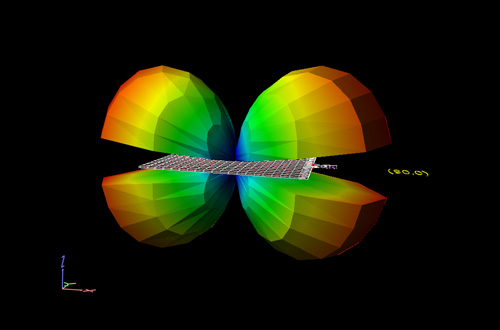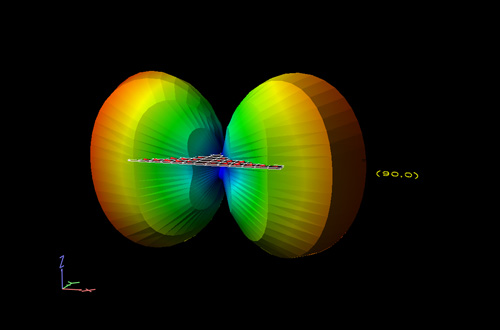|
Evaluation of Electromagnetic Modeling Tools, July 2009
Why do we need to define a finite substrate? Modeling a Powerbus with IE3D
Practically, a patch antenna always has finite substrate or its substrate is finite size in the horizontal direction. However, normally the substrate size is significantly larger than the patch size and we can model it as a patch on top of a horizontally infinite substrate. However, in this case, the substrate size cannot be considered to be infinitely large. With the infinite substrate assumption, the radiated field in that direction is basically a surface wave. It is considered as loss in the radiation pattern calculation in the infinite substrate assumption. This assumption will lead to incorrect radiation patterns for the board plane. The following figures show the 3D radiation patterns at 1.14 GHz. The pattern in (a) is obtained without defining a finite dielectric block. The radiation around the board plane is almost zero instead of the maximum. After defining the dielectric block as a finite substrate, the radiation is maximum at θ=90° and φ=0°. Therefore, a finite dielectric block must be defined in infinitely extended layered substrates. 
(a) With infinitely extended dielectric block 
(b) With finite dielectric block Fig. 1. Radiation pattern at 1.14 GHz
Reference: [1] IE3D User's Manual, Release 14.1, Zeland Software Inc., May 2008. |